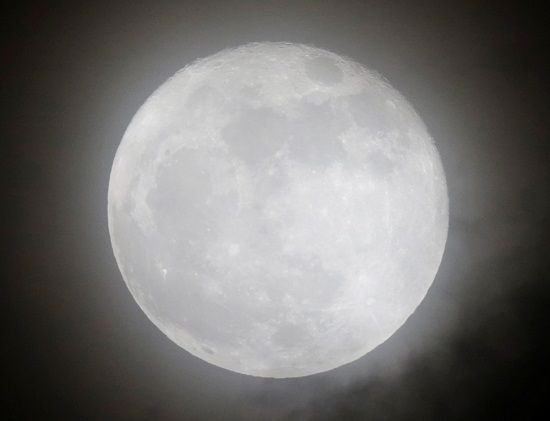Supermoon 2016: Why November's Full Moon Will Be The Biggest And Brightest Until 2034 And How To Watch

A supermoon will grace the skies Monday night, creating an image that won’t occur again for years. The moon may look unusually large, but it is just closer to earth, about 30,000 miles than it typically is.
At 6:22 a.m. EST on Monday, the moon will be at its closest orbital approach to earth, also referred to as perigee, NASA reported Wednesday. By 8:52 a.m. EST, the moon will be full and appear to be at its largest.
Coming soon to the sky near you: A #supermoon! On Nov. 14, the moon will be its closest to Earth since 1948. Details https://t.co/AshMuSU6vR pic.twitter.com/c10m7LvsCH
— NASA (@NASA) November 9, 2016
People can also view the moon Sunday or Monday night. “The difference in distance from one night to the next will be very subtle, so if it’s cloudy on Sunday, go out on Monday. Any time after sunset should be fine. Since the moon is full, it’ll rise at nearly the same time as sunset, so I’d suggest that you head outside after sunset, or once it’s dark and the moon is a bit higher in the sky,” Noah Petro, the deputy project scientist of the Lunar Reconnaissance Orbiter mission at NASA, said.
Rather than seeing the supermoon at home, stargazers should consider going out to watch it in a place where they can actually notice a difference, Science Alert reported. The best way to see a supermoon is an area with little pollution and little to no artificial light. Considering watching the supermoon from a roof with a view of the city. To see the moon rise over skyscrapers will make it appear larger in the night sky. Watching the moon sit above mountains also offers a beautiful views, or looking at the sky on an east facing beach can put the moon in perspective without the distraction of city life.
A moon can be identified as a "supermoon" if it is up to 14 percent bigger and appears 30 percent brighter when it is at its farthest point in orbit. The moon’s orbit around the earth varies, at times it can be closer and at times it can be further because it is slightly elliptical.
"This [supermoon] is more a technicality than an intense scientific interest,” MIT planetary scientist Richard Binzel said. “But anything that gets people interested to look up and notice the night sky and ponder the universe is a good thing.”
The next time anyone will be able to see a supermoon like the one that is expected to appear on Monday is on Nov. 25, 2034.
© Copyright IBTimes 2024. All rights reserved.












